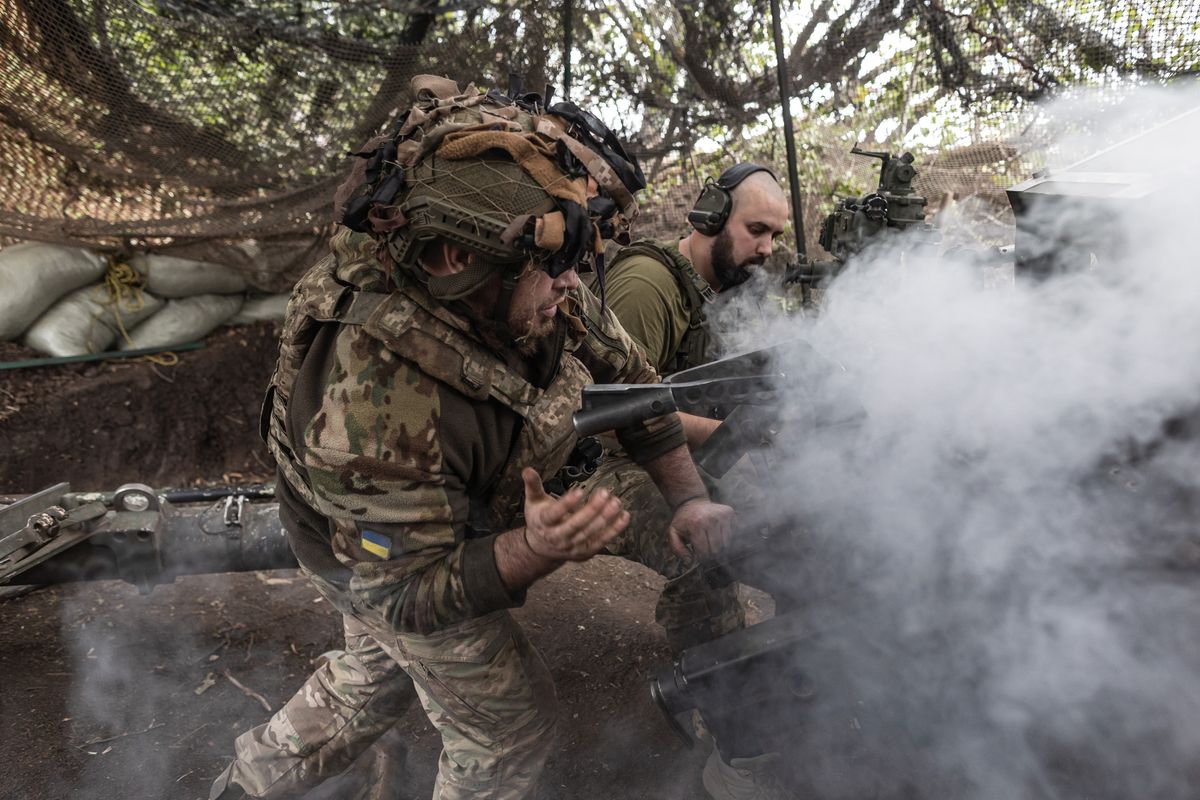OPINION — While the media and Congress have kept the public focused on the Mueller report and the next election, there are national security budgetary issues that are piling up that require attention.
For example, a lack of spare parts has kept some 350 F-35 Lightning Joint Strike Fighters, already deployed at sites worldwide, from flying or conducting any of their tasked missions, 30 percent of the time, according to a Government Accountability Office (GAO) report released last Thursday.
One issue: The specially-coated F-35 canopy over the pilot that helps maintain the airplane’s stealth capability has failed more frequently than expected, and the original manufacturer has not been able to produce enough new canopies to meet demand.
It was always known that sustaining the complex, stealthy, F-35 aircraft, that cost some $90 million per plane, would be a difficult and expensive proposition, but the new GAO report points out how unprepared both the military services and prime contractor, Lockheed Martin Co., were for the task.
There are three variants of the F-35, which complicates sustaining what is to be the legacy fighter aircraft for the Air Force (F-35A, conventional takeoff and landing); Marine Corps (F-35B, short takeoff and vertical landing); and Navy (F-35C, carrier suitable version).
Adding to the spare parts problem is the fact that the F-35 program has been “a highly concurrent program wherein aircraft, spare parts, and mission software continue to be developed and redesigned, while fielded aircraft must be sustained,” according to the GAO.
As a result, the GAO said there are “at least 39 different [spare] part combinations across the [deployed] fleet.” The early production aircraft, which cost some $15 billon, have parts and software different from current production and “have faced more parts reliability issues and parts shortages than later-production aircraft,” according to the report.
One problem: A majority of early production F-35s are being used to train pilots on the aircraft. GAO reported a lack of spare parts at Eglin Air Force Base, saying the deficiency caused training units to be unable to fly “about 56 percent of the time from May 2018 through November 2018.”
The spare parts packages accompanying operational F-35s that were deployed to Japan between November 2017 and May 2018, turned out to be incompatible with the aircraft. The Air Force had to then deploy older F-35s with less advanced capabilities that matched the spare parts package. The first Marine Corps spare parts packages for F-35s sent aboard aircraft carriers USS Wasp and Essex in 2018 also “were not initially configured to be compatible with the Marine Corps’ deploying aircraft,” the GAO said.
One key contributor to the current spare parts shortages is the F-35 program’s limited capacity to repair broken parts. The GAO found “the average time to repair an F-35 part was more than 6 months, or about 188 days for repairs that were completed between September and November 2018—more than twice that of the program’s objective of 60-to-90 days.”
In the case of the pilot stealth-coated canopies, design changes are being considered and additional manufacturing sources are being sought.
Meanwhile, the GAO reported, “the Department of Defense (DOD) had a repair backlog of about 4,300 F-35 parts.”
Why? Military depots capable of repairing F-35 parts were meant to be in place by 2016, “but the F-35 program’s current plan now projects that the military depots will not have the capability to repair all parts at the expected repair demand rates until 2024,” the GAO said.
For already deployed F-35s, some personnel are taking parts from grounded F-35s rather than waiting for new parts to be delivered. “These high rates of cannibalization mask even greater parts shortages,” the GAO reported.
As an example, the Marine Corps F-35 squadron at the Air Station in Iwakuni, Japan, had to take 187 spare parts from its inventory to backfill parts for six Marine F-35s deployed on the USS Wasp. “This had a measurable effect on the squadron’s readiness to support its [Iwakuni] operational requirements, as reflected by lower availability of parts within their inventory to support broken aircraft,” GAO reported.
But there has been a more basic failure in planning for F-35 sustainment.
From the start, prime contractor, Lockheed Martin was to be responsible for “managing the F-35 supply chain, depot maintenance, and pilot and maintainance training, as well as for providing engineering and technical support,” the GAO said.
The supply chain program was designed so that Lockheed Martin managed a common, global pool of spare parts, which had been purchased by the Defense Department (DOD). The Air Force, Navy, and Marine Corps, along with eight international partners and other foreign military sales customers, then accessed parts from the shared pool “based on how many F-35 aircraft they own and the number of flight hours they plan to fly, among other factors,” the GAO said.
“As the size of the fleet and number of operational squadrons grow, the F-35 program will face increasing demands on its supply chain and competing operational priorities across participants that will likely make it more difficult for the program and the U.S. services to mitigate fleet-wide shortages of F-35 parts,” the GAO said.
Full establishment of the global networks for moving parts is not complete and planning is three to four years behind “because the program was more focused on producing the aircraft than on sustainment,” the GAO said. Lockheed Martin officials said they did not initially realize the complexity of setting up a network of overseas sites that required export and import authorizations to be coordinated through the Department of State.
The GAO also found, however, that “DOD has spent billions of dollars on F-35 spare parts but does not have records for all the parts it has purchased, where they are, or how much they cost.” GAO said that some $962.4 million was budgeted to purchase F-35 initial spare parts for fiscal year 2018.
By 2023, the global U.S military services-owned F-35 fleet is expected to expand to more than 1,100 aircraft across 43 operational sites both at home and abroad. Australia, Canada, Denmark, Italy, the Netherlands, Norway, Turkey, and the United Kingdom are international partners who have contributed funds for F-35 system development, and all but Canada have signed agreements to procure aircraft. Belgium, Israel, Japan, and South Korea are foreign military sales customers.
With sales to partners and other foreign sales customers, more than 3,300 F-35 aircraft are expected to be produced.
As the numbers grow, the F-35 supply chain will face increasing demands, making it more difficult to address the current shortages of F-35 parts.
The F-35 is already DOD’s most costly weapon system, and up-to-now the costs to sustain the system over a 60-year life cycle have been estimated at more than $1 trillion. Upgrading its spare parts problem is going to add billions to that figure.
With all of today's distractions, who is paying attention to the growing costs of new weapons systems?
Read more of Walter Pincus' Fine Print in The Cipher Brief
Read also 'What Happens When Weapons Go To War'












